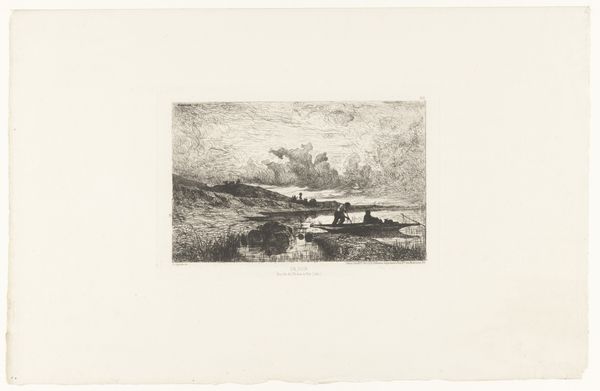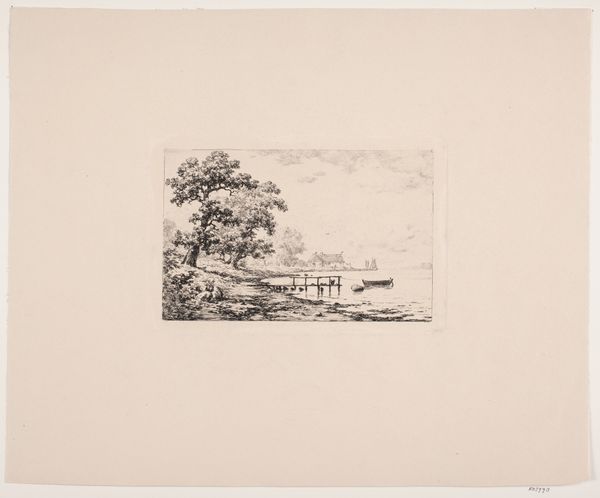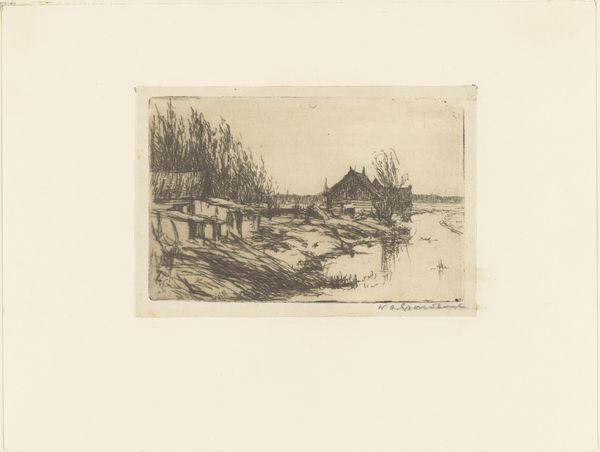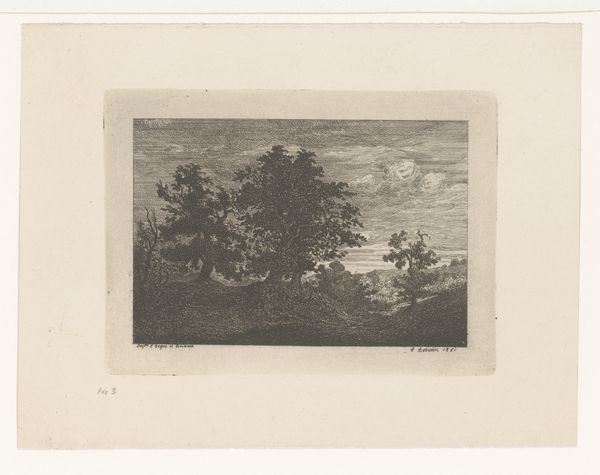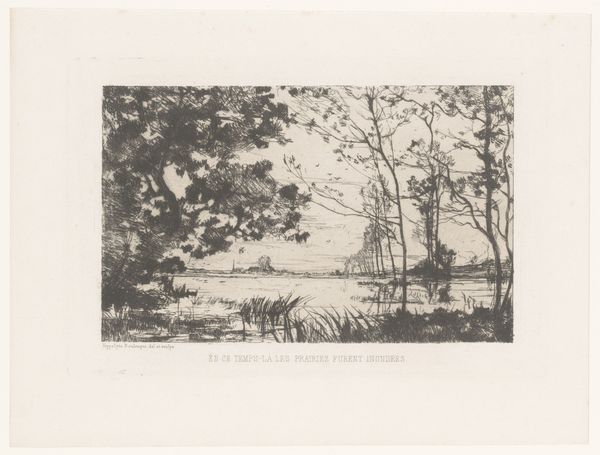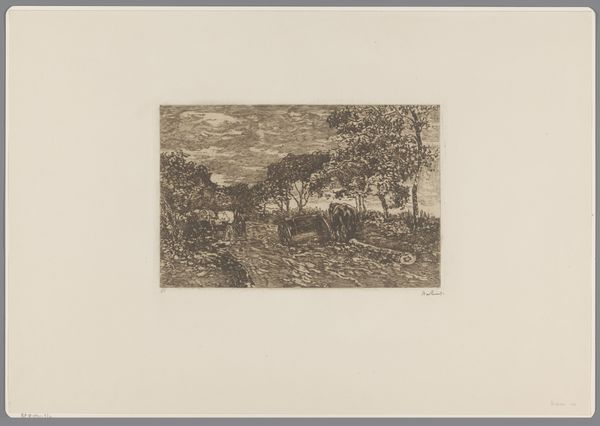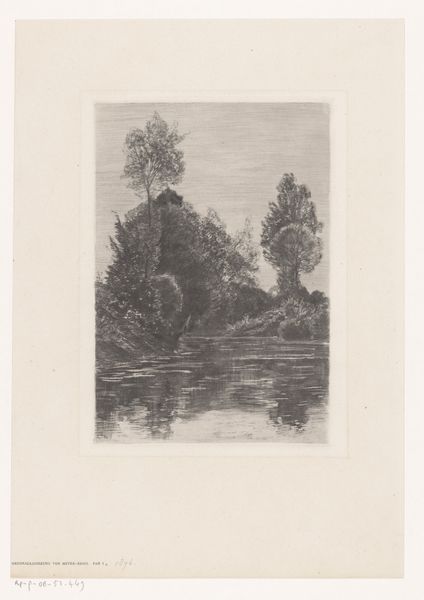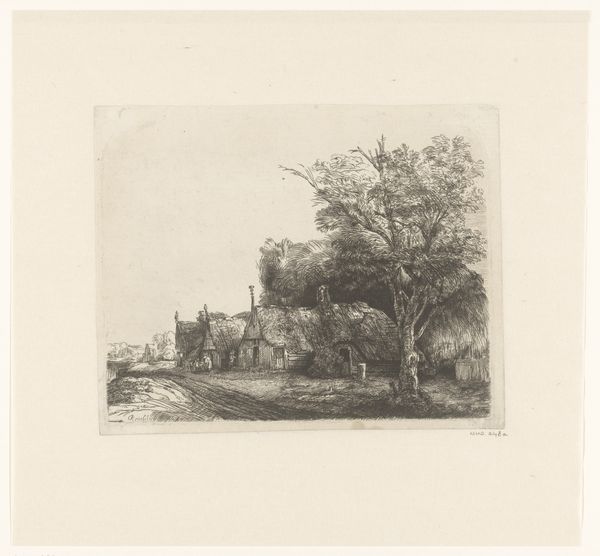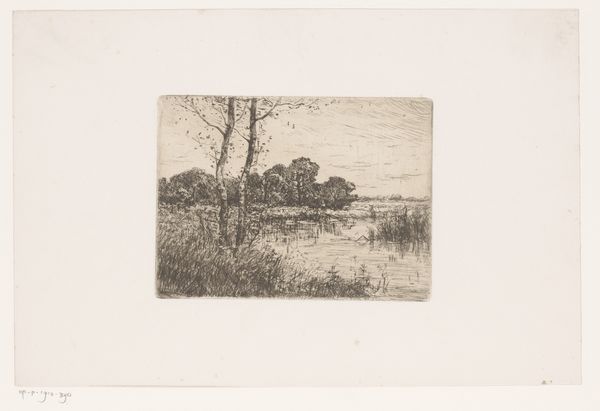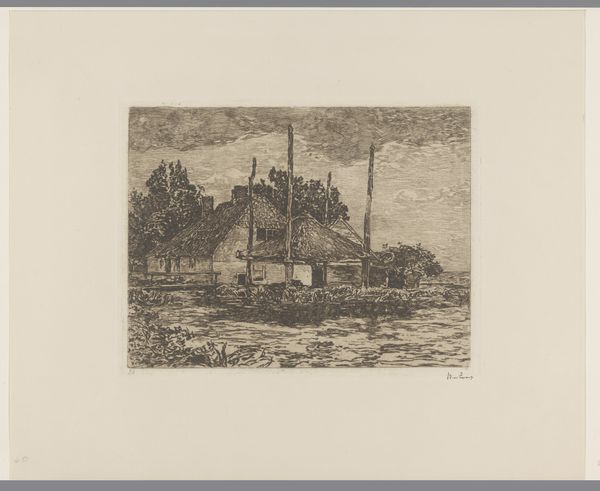
print, etching
# print
#
etching
#
landscape
#
realism
Dimensions: height 73 mm, width 77 mm
Copyright: Rijks Museum: Open Domain
Curator: The mood it evokes for me is wonderfully somber, almost as if the whole scene is holding its breath. Editor: We're looking at "Boerderij aan een plas," or "Farm by a Pond," a print created sometime between 1887 and 1952 by Chris van der Windt. It's an etching, a process that inherently marries artistic expression with industrial technique. Curator: Yes, the lines created through the etching—they tremble and whisper! You can almost feel the damp air clinging to the thatch of the farmhouse. I sense solitude, but not the desolate kind; it feels fertile, pregnant with unspoken stories. Editor: I find it compelling how van der Windt used etching to depict rural labor and its intimate relationship to nature. Look at the precision required to transfer the image onto the metal plate and then witness the alchemic transformation in acid! It shows how the means of production influence the narrative and texture. Curator: The way the trees dominate the scene, like silent guardians over this humble dwelling, resonates deeply. They're more than just botanical studies, they seem to possess an almost melancholic awareness. They feel very… present. Editor: Exactly, etching provided artists with access to image dissemination outside the confines of painting. It facilitated a market where art was made accessible across social classes—changing perceptions around who consumes art. In Van der Windt's case, this is art produced by hand and made widely available through industrial techniques. Curator: Do you ever feel like some artworks simply choose you? I feel utterly captivated by its humility. Its delicate strokes weave such profound feelings. Editor: Agreed; and by understanding the labor and material processes intertwined, this expands how we read and consume artwork, encouraging mindful, social, and historical consciousness. Curator: It all boils down to experiencing those strokes firsthand to me and being transported by Van der Windt, for an ephemeral moment, into the soul of a tranquil Dutch countryside. Editor: The layers and layers of context really do unveil unexpected stories and the role objects and materials take in the creation and distribution of a specific narrative.
Comments
No comments
Be the first to comment and join the conversation on the ultimate creative platform.
